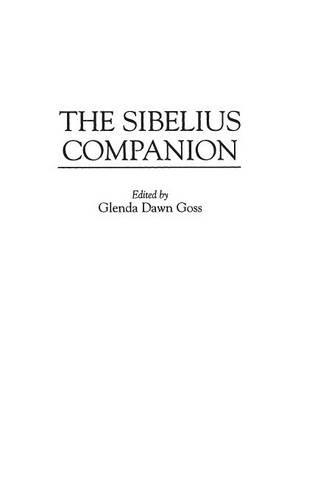
The Sibelius Companion
(Hardback)
Publishing Details
The Sibelius Companion
By (Author) Glenda D. Goss
Bloomsbury Publishing PLC
Greenwood Press
9th December 1996
United States
Classifications
Tertiary Education
Non Fiction
Art music, orchestral and formal music
780.92
Physical Properties
Hardback
468
Width 156mm, Height 235mm
794g
Description
"The Sibelius Companion" represents in its collected chapters particularly advanced research in the field of Sibelius studies. Since mid-century, so much new information has come to light that our understanding of both the man and his music has changed profoundly. These changes are fully represented in the present volume. Some of the topics examined, particularly the vocal music, including "Luonnotar", which is here given a brilliant and provocative analysis, have previously been neglected. Other chapters deal with more familiar works, such as the Second and the Seventh symphonies, which are approached in the light of recent scholarship and fresh perspective. Readers will find new light on Sibelius's biography, the first English-language investigation ever done of Sibelius and Karelianism, pioneering sketch studies, new analytical methods for understanding the music, studies in reception history, an assessment of the state of Sibelius research with a rich bibliography, the most complete chronological catalogue of works available, and a full "Register of Names" that identifies in considerable detail over 100 individuals and organizations important in Sibelius's creative life. Written in an accessible style, newly researched and fully documented, "The Sibelius Companion" should interest scholars, students and music enthusiasts alike.
Reviews
This collection comprises 13 chapters, each by a different scholar, addressing a range of textual amd contextual matters. James Hepokoski's "The Essence of Sibelius: Creation Myths and Rotational Cycles in Luonnotar," for instance, is a fascinating and well-written analysis of a tone poem rarely heard in the U.S. Five biographical interludes link the diverse contributions. Kudos to the editor, who, in addition to the interludes and a compilation of Sibelius's observations, has also provided a useful chronology of works and register of names. Highly recommended for large collections serving upper-division undergraduates and above.-Choice
"This collection comprises 13 chapters, each by a different scholar, addressing a range of textual amd contextual matters. James Hepokoski's "The Essence of Sibelius: Creation Myths and Rotational Cycles in Luonnotar," for instance, is a fascinating and well-written analysis of a tone poem rarely heard in the U.S. Five biographical interludes link the diverse contributions. Kudos to the editor, who, in addition to the interludes and a compilation of Sibelius's observations, has also provided a useful chronology of works and register of names. Highly recommended for large collections serving upper-division undergraduates and above."-Choice
Author Bio
GLENDA DAWN GOSS is Professor of Musicology at the University of Georgia and 1996 Visiting Professor at the Sibelius Academy in Helsinki. She is the author of Jean Sibelius and Olin Downes: Music, Friendship, Criticism (1995) and other studies on the music of the 20th century.
